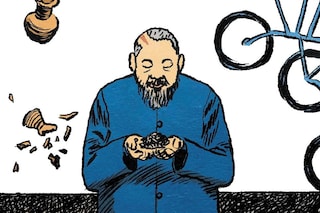Art legends become art Oracles and offer words of wisdom on life, work, and inspiration – here we decode what it all means
“Don’t be yourself. Be yourselves”, “Good work can come from bad habits”, and “Never make an appearance without controversy”, is a selection of fictional guidance offered by Cindy Sherman, Jean-Michel Basquiat, and Salvador Dalí. By looking at three key elements of each artist’s life and work, writer Katya Tylevich and illustrator Mikkel Sommer have produced 50 Oracle cards (collectively titled Art Oracles and available now) to consult when you’re looking for life, work or inspiration advice. Below, we use art history to demystify what it means.
SALVADOR DALÍ
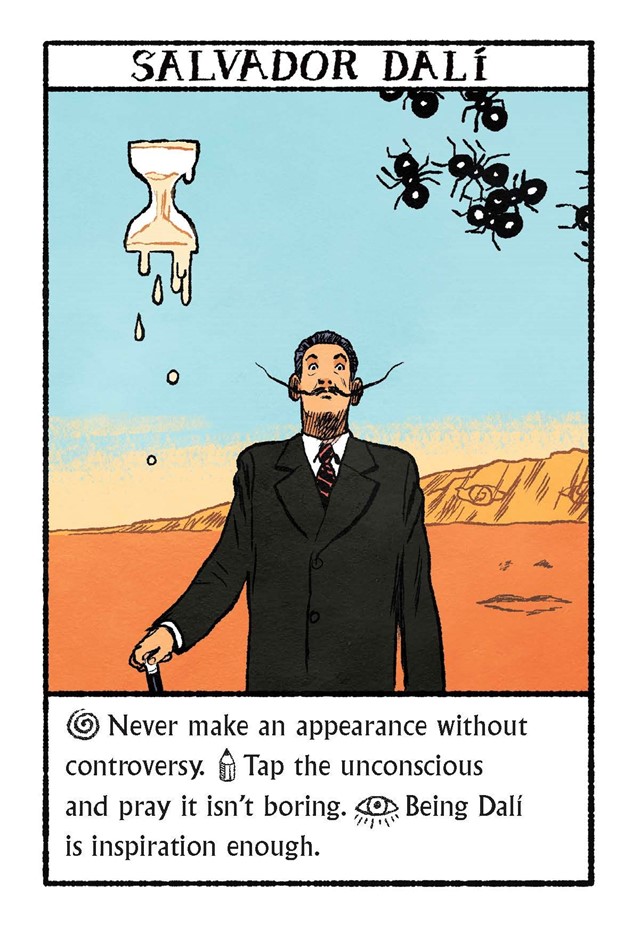
Never make an appearance without controversy: In 1936, Dalí conducted a lecture at the London International Surrealist Exhibition dressed in an antique diving suit. While his intention was to use it as a metaphor for diving into his subconscious, instead, he began to suffocate. His audience thought it was part of the act. He was also holding a billiard cue and was flanked by two Russian wolfhounds.
Tap the unconscious and pray it isn’t boring: Dalí never did drugs – a fact revealed in a 1970 issue of LIFE magazine when he said, “I don't do drugs. I am drugs.” So it’s hardly surprising that in the 1930s, he invented a Surrealist technique that he called “the paranoiac-critical method”. In order to invoke it, Dalí suggested falling into a paranoid state, which he did by standing on his head until tripping into semi-lucidity. He believed that by doing so, people could free themselves from previous understandings of the world so as to see things differently and/or new – aka tapping into the unconscious mind. He channelled this through his art by drawing connections between completely unrelated objects. It is said that Dalí’s friend, Sigmund Freud, also had a huge influence on him – which explains a lot.
Being Dalí is inspiration enough: Dalí was Dalí’s own favourite topic. He loved to paint, talk and write about himself and did so throughout his life – ultimately dying at 84. In 1953, Dalí told the Smithsonian Magazine, “Each morning when I awake, I experience again a supreme pleasure – that of being Salvador Dalí.”
JEAN-MICHEL BASQUIAT
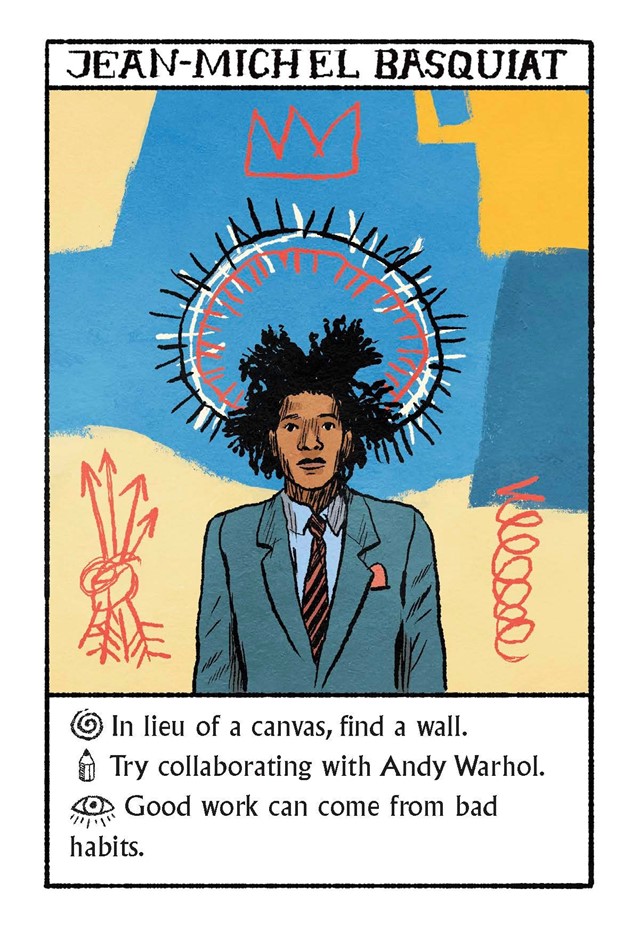
In lieu of a canvas, find a wall: Before Basquiat was “Basquiat”, he was one-half of SAMO©. Alongside Al Diaz, the pair would use marker pens and spray paint to write cryptic messages across the city’s walls: SAMO©,,, FOR THOSE OF US WHO MERELY TOLERATE CIVILIZATION,,,” and “SAMO©,,, FOR THE URBAN RED-NECK,,,”.
Try collaborating with Andy Warhol: Although almost three decades stood between them in age, Warhol and Basquiat were very close friends and collaborators. This quote from Warhol’s longtime assistant Ronny Cutrone perhaps best sums this up: “It was like some crazy art-world marriage and they were the odd couple. The relationship was symbiotic. Jean-Michel thought he needed Andy's fame, and Andy thought he needed Jean-Michel's new blood. Jean-Michel gave Andy a rebellious image again.” Unfortunately, given that Warhol died in 1987, this might be a tough one to follow.
Good work can come from bad habits: Tragically, Basquiat’s heroin addiction caught up with him on 12 August 1988, when he died of an overdose at his New York studio. This harrowing account from the artist’s friend, Anthony Haden-Guest, details the last time he saw him, on the day of his death. Don’t try this one at home.
CINDY SHERMAN
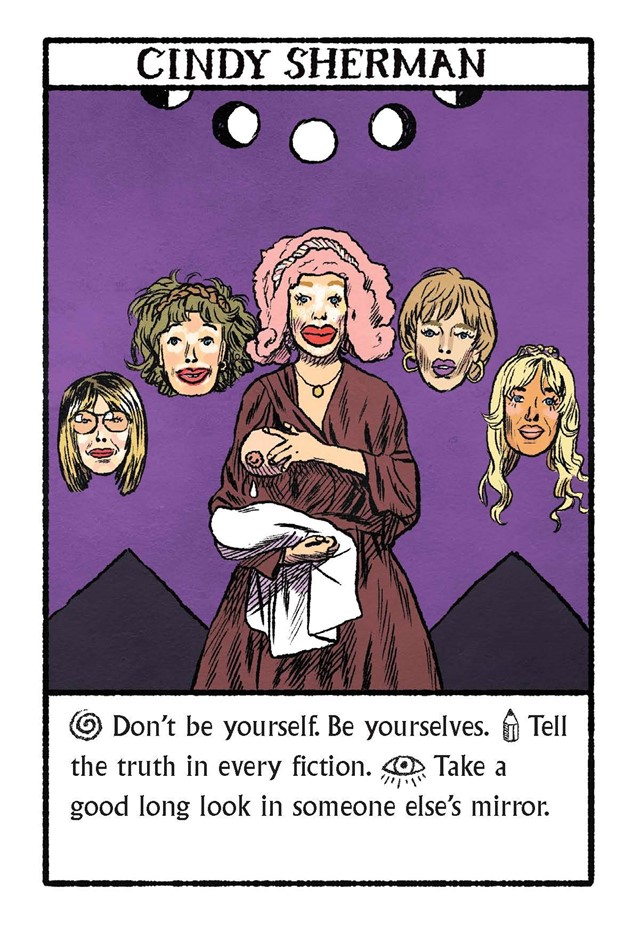
Don't be yourself. Be yourselves / Tell the truth in every fiction / Take a good long look in someone else’s mirror: Sherman’s career is defined by her chameleon-like quality to morph into various people. Most notable is Untitled Film Stills, an incredibly influential series of 69 black-and-white photographs created between 1977 and 1980, which look as if they were taken on a film set, and play into the stereotypes that were (/are) present in female film roles. Outside of the series, Sherman has explored her other selfs across a huge body of work – most showcased on her Instagram.
FRIDA KAHLO
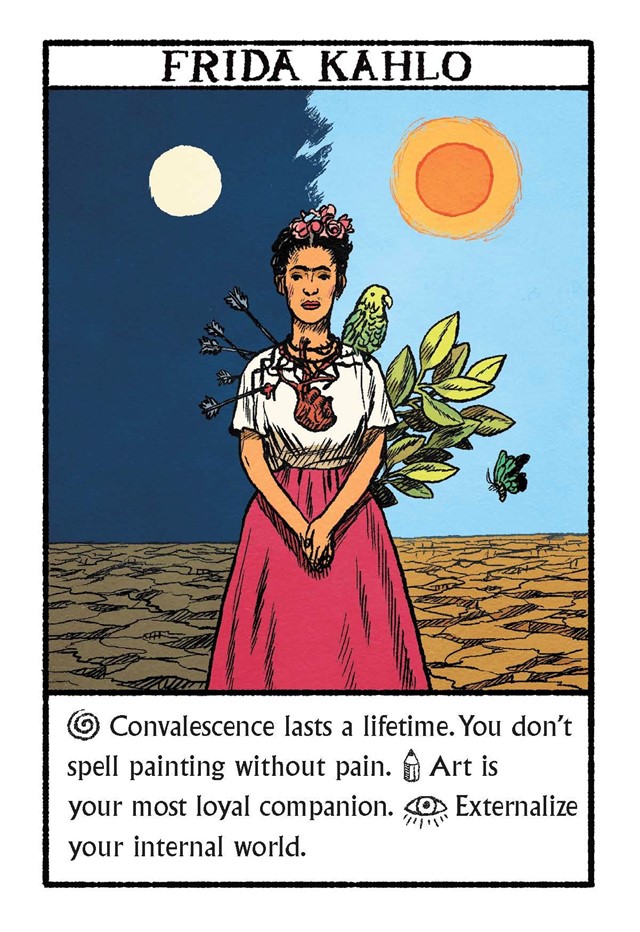
Convalescence lasts a lifetime. You don’t spell painting without pain: Kahlo was famous for channelling her struggles into her work. This heartbreaking quote, "I'll paint myself, because I am so often alone, because I am the subject I know best”, explains the motives behind the vast amount of self-portraits she created.
Art is your most loyal companion: The artist’s husband, the painter Diego Rivera, was tempestuous, to say the least. With Rivera 20-years Kahlo’s senior and already well established as a famous artist when they met (Kahlo was a student at the time). While both had affairs, it is alleged that Rivera once asked for a doctor’s note because he was incapable of being faithful. In turn, Kahlo used her art to channel her trauma.
Externalise your internal world: The artist’s work was incredibly unashamed and brutally honest. Her troubled marriage was exasperated by the fact she could not bear children – a result of a terrible bus accident in 1925. Something she often referred to in her work, such as “Me and My Doll” (1937).
ANDY WARHOL
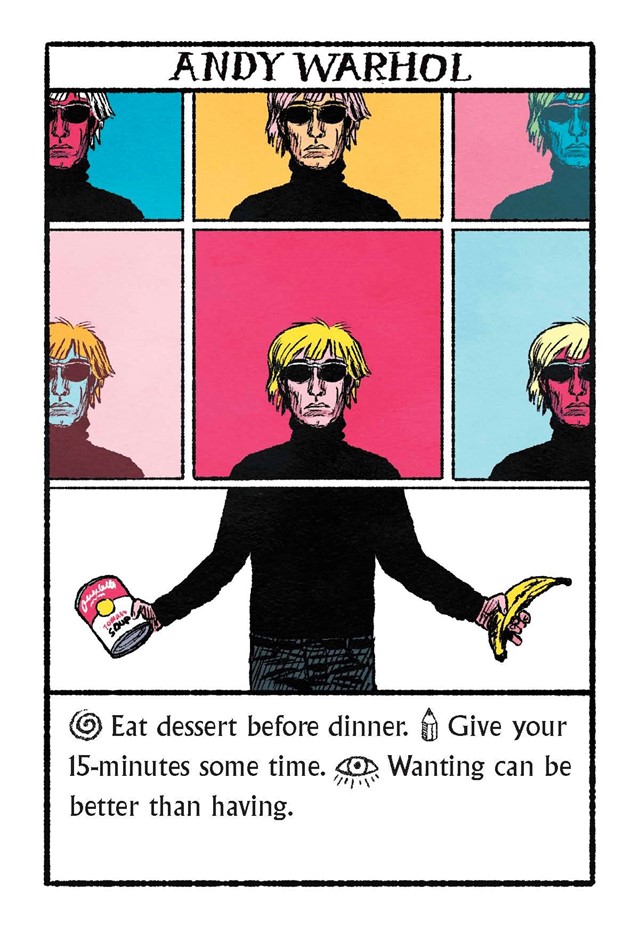
Eat dessert before dinner: Warhol once allegedly said, “All I ever really want is sugar”. His sickly sweet tooth sometimes manifested into his work, such as the illustration “Ice Cream Dessert” (1959).
Give your 15-minutes some time: While it has been debated as to if he actually said the now iconic quote, “In the future, everyone will be world-famous for 15 minutes”, it spawned the short-lived TV show, Fifteen Minutes, granting us Warhol as a host and stars such as Marc Jacobs and Grace Jones as his guests.
Wanting can be better than having: In his book The Philosophy of Andy Warhol: from A to B and Back Again, Warhol wrote: “If something’s going to happen to you, it will, you can’t make it happen. And it never does happen until you’re past the point where you care whether it happens or not. An actress friend told me that after she didn’t want money any more and after she didn’t want jewels any more, that’s when she got money and jewels. I guess it’s for our own good that it always happens that way, because after you stop wanting things is when having them won’t make you go crazy. After you stop wanting them is when you can handle having them. Or before. But never during. If you get things when you really want them, you go crazy. Everything becomes distorted when something you really want is sitting in your lap.”
Art Oracles is published by Laurence King and available now
